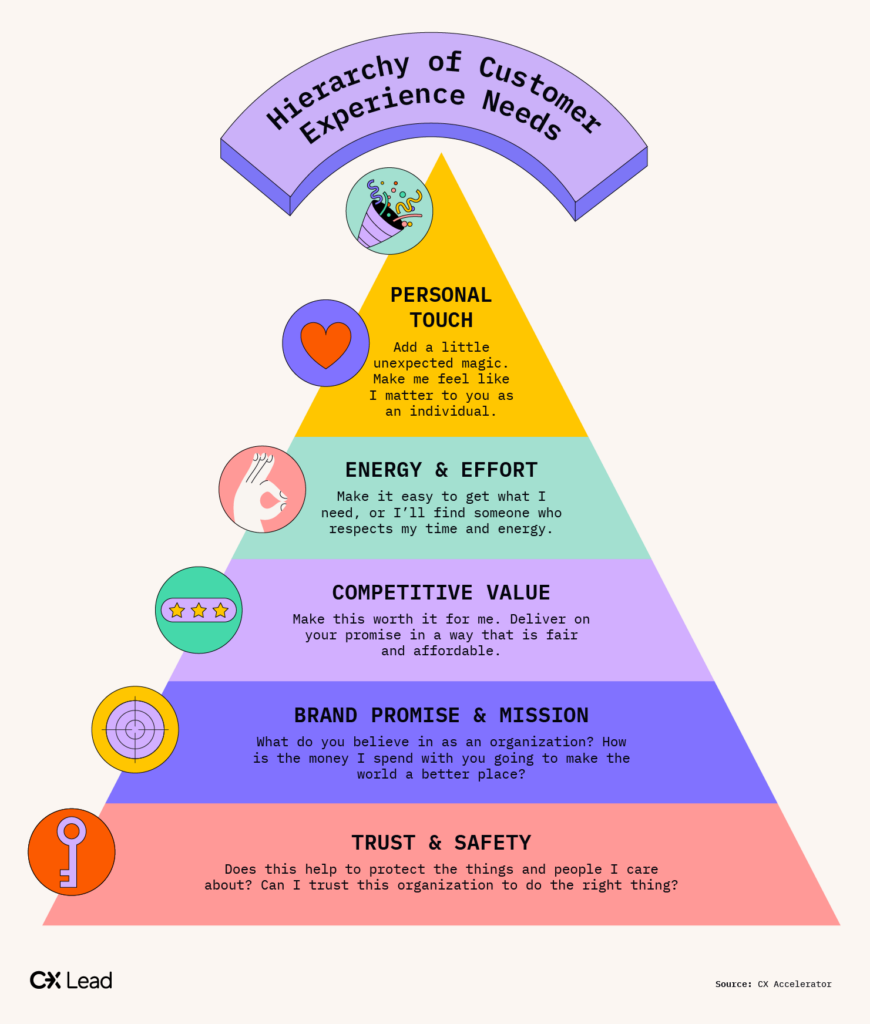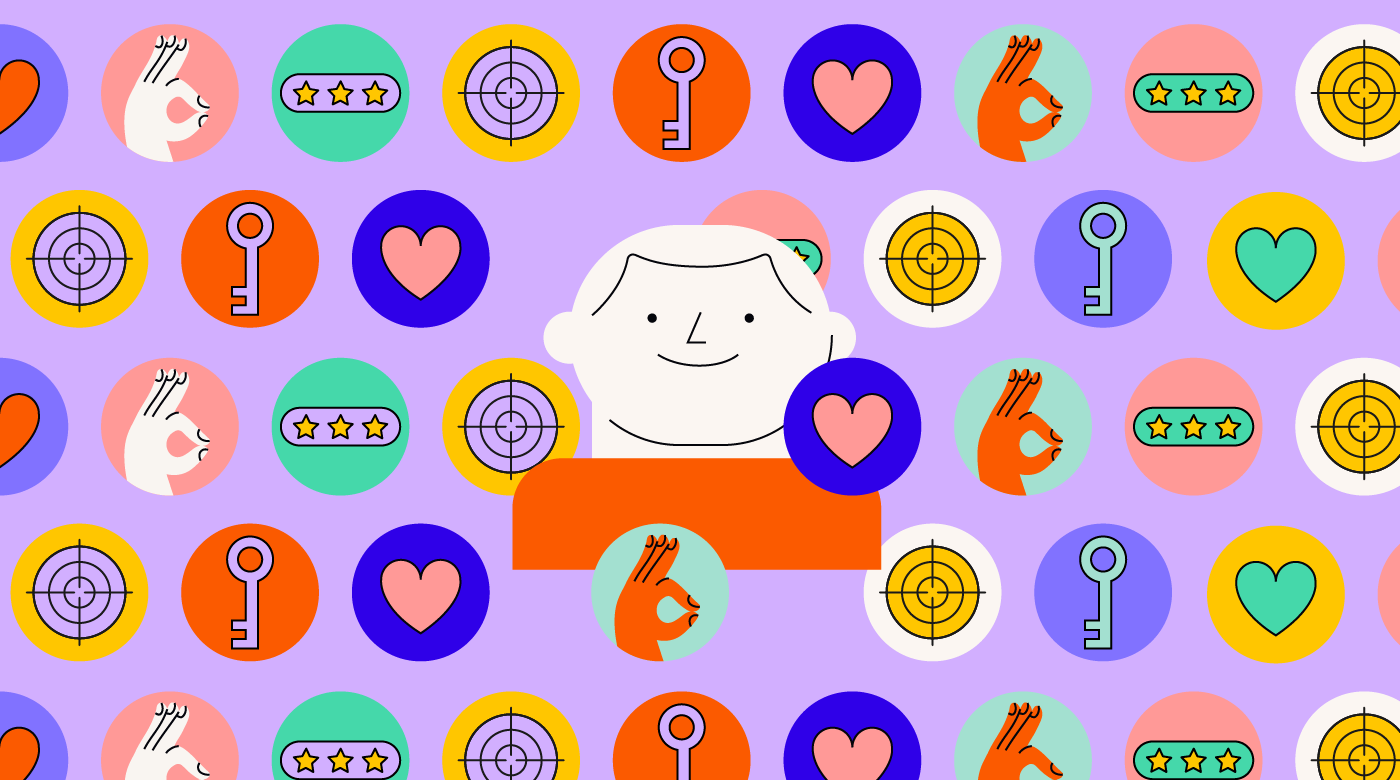The world of CX is changing so quickly. New technology and software, new techniques, and a new generation of leaders doing the work. Even so, the thing that may have changed most of all is our customers themselves! Customer psychology took a major turn while the world navigated a global pandemic. And in many ways it has yet to stabilize.
If CX is “understanding the thoughts and perceptions that people have towards a brand” then changes in customer psychology represent a huge change in how we need to perform our work. When it comes to decoding why people behave the way they do, there is one resource I often drift back to: Maslow’s hierarchy of needs.
This famous theory “states that our actions are motivated by certain physiological and psychological needs that progress from basic to complex” according to VeryWellMind. In the work of CX, we are often attempting to guide our customers to very specific actions. These would include things like renewing a contract, speaking positively about our brand to their friends, and leaving a positive review. The more we understand the layers of thought our customers are navigating, the more likely we are to successfully guide them towards the best outcome.
So what would it look like if we applied Maslow’s hierarchy of needs to a Customer Experience context? It won’t be perfect for myriad reasons. Not the least of which is that every business has a different type of relationship with their unique customers. But I do believe it could be helpful…and maybe assist organizations to see their customers in a way they hadn’t before.

Below is the “Hierarchy of Customer Experience Needs” I shared on LinkedIn. Fortunately, it generated a wonderful dialogue… the highlights of which we are pleased to feature right here.

The bottom layer could be considered the most important, because in the absence of this none of the things higher up are relevant. For me this bottom layer is obvious. The needs of the customer begin with Trust and Safety.
Trust and Safety
So many of our experiences are designed to make the customer just a little more comfortable, or provide a small pleasure, or make things just a bit easier. But these things only matter if the customer can answer one very simple question…am I safe?
One of the first things I noticed as a CX leader during the pandemic is how many brands had to quickly find a strong answer to this basic question. The most important and sought after experiences very quickly became those that people believed would protect them and those they cared about.
While most customers have “moved on” from a hyper-focus in this area, it’s still a great lesson for CX professionals to take out of this period of history. Never leave the customer guessing if their safety could be on the line. Be proactive to communicate all the ways they can trust you to protect them, their data, their privacy, and their loved ones.
Jacob Shields had to this say, as we consider increasingly digital environments in which we interface with our customers:

Jill Raff approves of “Trust and Safety” as a foundation.

Micheleigh Perez had a slightly different bottom layer, which I found to be helpful:

Mission
Next up on the “Nate version” of this hierarchy, we have mission. This was the most disputed layer by those who engaged in dialogue on the LinkedIn post. It is my personal strong belief that customers want to do business with brands who are bold in their conviction. They are making the world a better place specific ways that resonate with the customer’s core values. If I’m going to invest money and energy into a brand, I want to see them investing money and energy back into the communities they serve. This is a big part of how my personal loyalty is earned.
Others felt as though this was overrated.


This is one area I’d sure like to dig deeper into, as I don’t think there is much data on it yet. I have a personal strong conviction here, but it’s hard for me to back it up beyond that.
Value and Effort
Layer three and four to me are somewhat interchangeable. I love the question of “is it worth it for me to engage with you as a brand.” As a customer we are having to bring resources to the table. This most commonly includes money and time. If you make the experience easy for me (effort), I may be willing to invest more money. If you can make it comparatively inexpensive and easy, it’s generally going to be a no-brainer! Of course, this is not true if I can’t trust you to deliver on the promised experience…in which case we are going back down the pyramid to a more essential layer.
I was surprised that there were not really any comments related to this area. I think the concept of “value” is still emerging for many CX leaders. The function of Customer Success (which is now extending well-beyond just SaaS business) is challenging us in a good way here. I believe maximizing customer value will be a major upcoming theme for experience leaders.
As far as effort, this feels like this is kind of an obvious one now. Could it be that we are in a bit of a “post-effort” age as CX professionals? It doesn’t feel like it to me, as so many brands are still struggling here. Perhaps it’s something we know in our minds, but are having trouble executing the principles across the larger customer journey.
Personal
Everything in the experience hierarchy to this point has been somewhat formulaic. All the other layers can be performed at scale, with very little consideration for any specific customers. The top of the pyramid challenges that and aspires to know the customer as a fellow human being. I love how Charles Devine says it:

Loyalty is so hard to earn these days. To me, this personalization layer is where we take the relationship over the top to generate actual brand ambassadors. It’s a hard path to walk though, as Aneta Gogloza makes clear:

Conclusion
Employees and customers alike are looking to brands for meaningful connection and a sense of identity. As I love to say, CX leaders are community builders. But in order to be effective in this calling, one most have considerable understanding of our stakeholders psychology. Joe Everett had this thought-provoking comment, amplified by Jeff Toister.


I love seeing leaders like Joe and Jeff who are embracing the “whole person.”
There are quite a few great frameworks out there aside from Maslow’s Hierarchy that can help us to understand customer psychology. One such that is worth looking into comes from Christopher Brooks:

Always fun to have the legendary Shep Hyken chime in as well. His approach validating…but also quite a bit different than what I came up with. We are looking forward to that article Shep!

Whatever method you use to achieve a greater degree of customer understanding, it is a noble and worthwhile pursuit. Thank you, Maslow, for helping us to gain a better understanding of ourselves even so many years later! And thanks to all these wonderful thought leaders who chimed in to challenge our existing perspectives and keep learning together.

